
— Illustrations by Greg Stevenson —

Years ago, I was lucky to begin writing about Canadian veterans who had served in Normandy while many were still active and willing to talk about their experiences. Before each interview, I reviewed each veteran’s unit war diary and other documents so I could ask detailed questions. Most of the veterans had never been asked to recall events in such detail before, but were anxious to have their stories and those of their comrades told. Over the course of follow-up interviews, I forged relationships and, in some cases, sincere friendships with many of these heroes. Here are the stories of some of the lesser-known veterans of the June 1944 invasion of Normandy.
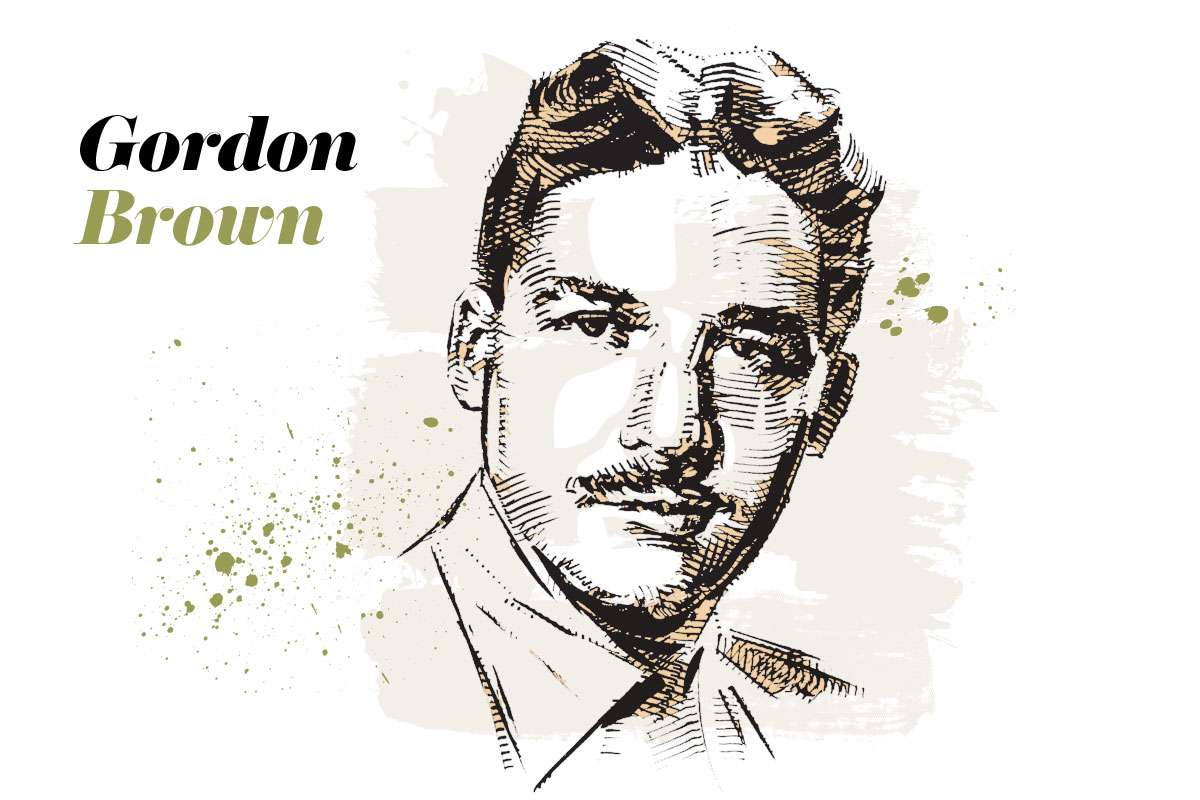
When I met Lieutenant-Colonel Gordon Brown at his home in Red Deer, Alta., he agreed to seek out as many of his comrades as possible and gather accounts of their service. But Brown’s own story was astounding.
Born in 1918, he was 22 when he left Manor, Sask., to join the newly mobilized Regina Rifle Regiment in 1940. Brown and his best friend, Glenn Dickin, were both high-school graduates and immediate candidates for officer training. By 1944, Brown, now a captain, was a transport officer. His D-Day passed in a blur of action as he arranged the landing and dispersal of battalion vehicles.
News that his friend Dickin had been killed, along with many others, had to be set aside because Lt.-Col. Foster Matheson ordered Brown to take over command of ‘D’ Company, holding an isolated outpost on the Caen-Bayeux railway line, the Reginas’ D-Day objective.

Crawling on his hands and knees to avoid snipers, Brown reached a stone-walled complex known as Cardonville Farm, which had been turned into a fortress with holes in the walls like a medieval castle. The railway was supposed to be a barrier to tanks, but a squadron from the 12th SS Panzer Division Hitlerjugend (Hitler Youth) found a level crossing and attacked the farm. Without infantry support, the Panzers were blind and ineffective, withdrawing at daylight to avoid the Allies’ fighter-bombers.
An infantry attack by Panzer Grenadiers was another matter and Brown knew his weakened force, now down to 60 men, needed help. Contacting Lt.-Col. Fred Clifford of the 13th Field Regiment, he called for artillery fire on the forward edge of the farm, warning everyone to take cover to avoid casualties from friendly fire. The concentrated artillery bombardment—called a stonk—was on target, forcing a German withdrawal while the Canadians survived in their slit trenches.
Despite being wounded three times, Brown led ‘D’ Company for most of the war, until he was promoted to command the battalion in April 1945. An outstanding leader and warm friend to his comrades, Brown died in 2008 a forgotten hero to most Canadians.
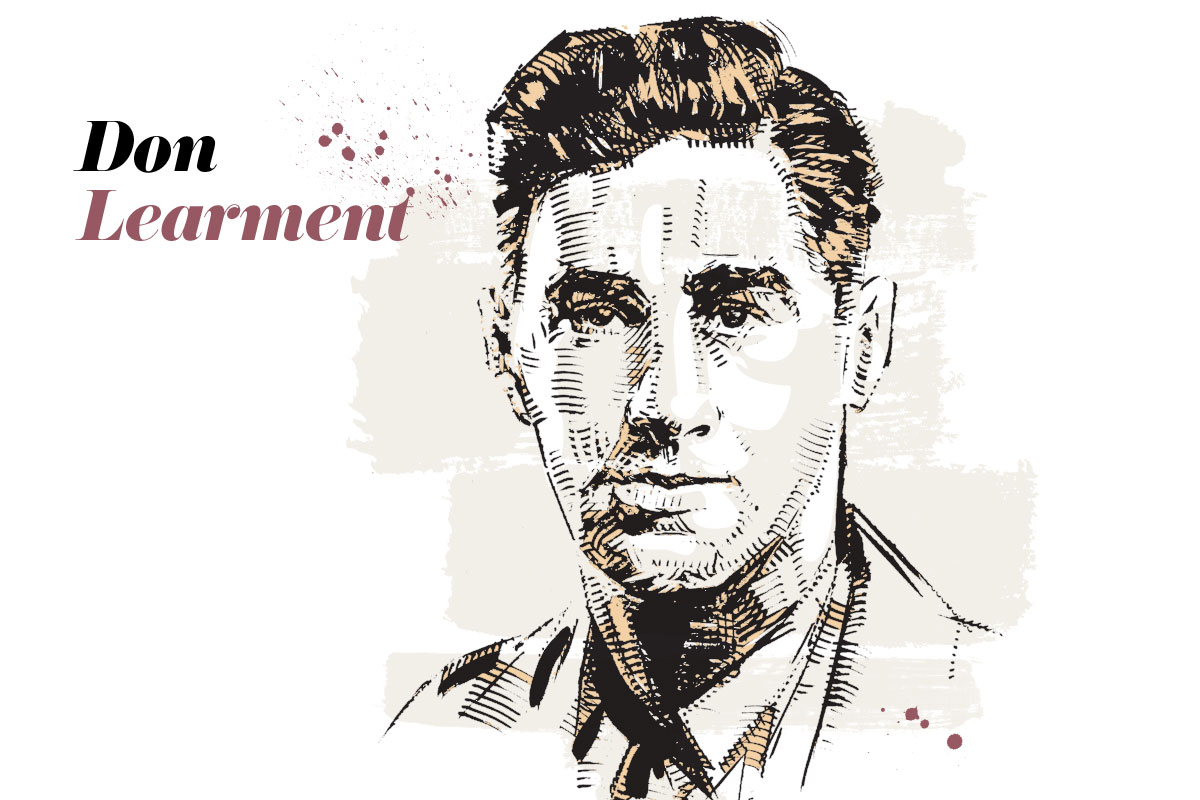
Don Learment’s war is raw material for a Hollywood epic. Born and raised in Truro, N.S., the tall, slim and studious young man joined the North
Nova Scotia Highlanders in 1940. His leadership qualities earned him a commission, rapid promotion and the confidence of his men and superior officers. Major Learment, officer commanding of ‘C’ Company, led the vanguard in the 9th Canadian Infantry Brigade’s advance inland on D-Day.
His command included a platoon from the Cameron Highlanders of Ottawa with medium machine guns, a troop of self-propelled anti-tank guns, the North Novas’ Universal Carrier platoon, reconnaissance tanks of the Sherbrooke Fusiliers, and his own infantry company. They were the tip of the spear in a diamond-shaped formation of tanks and infantry that was to operate as a “self-contained striking force” to seize the brigade objective: Carpiquet.
A German counterattack on the brigade’s left flank halted the British, and the Canadians were ordered to stop and dig in at Villons-les-Buissons. The next morning, June 7, they resumed their advance despite the vulnerable open flank. At 2 p.m., as the reconnaissance tanks reached Franqueville within sight of Carpiquet, the lead elements of 12th SS Panzer Division launched a major attack directed from Kurt Meyer’s headquarters at the Abbaye d’Ardenne. Despite determined resistance, the vanguard was isolated and overcome. Learment, along with many others, was taken prisoner.

Learment said he could never understand what led the Hitler Youth to wantonly kill some of those taken prisoner in Authie or execute others at the Abbaye d’Ardenne while sparing a large group who began a five-day forced march to Frontstalag 133, a prisoner-of-war camp in Brittany.
A month later, packed into a boxcar on a train headed to Germany, Learment and an American pilot broke a hole in the end of the car and jumped to freedom. A friendly farmer provided food and next day the escapees made contact with a French resistance group commanded by Captain George Le Coz. By mid-August, 22 Canadian and American escapees were with the group and participating in raids and a sharp skirmish with SS troops.
Learment was increasingly alarmed by the pillaging and the execution of alleged collaborators carried out by Le Coz (who was tried for his crimes after the war) and was determined to get back behind Allied lines. After reaching an American headquarters and spending a night in jail while identities were confirmed, Learment reached Paris and a plane to England. He rejoined the North Novas during the Battle of the Scheldt and served with them for the rest of the war.
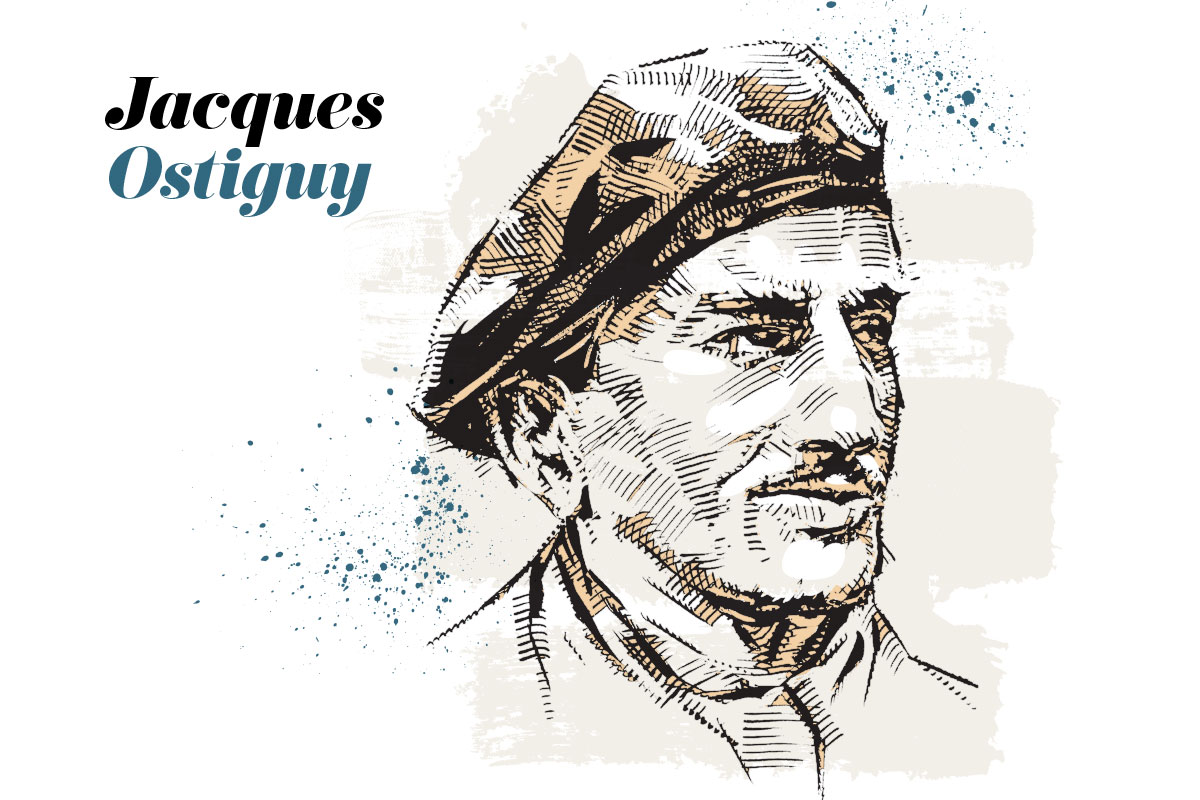
Major Jacques Ostiguy was a wiry, instinctive warrior and outstanding marksman who had always wanted to be a soldier. He admitted, somewhat apologetically, that he enjoyed the challenges of combat and loved the army. Ostiguy graduated from Royal Military College in 1940 and joined Le Régiment de Maisonneuve—the “Maisies”—in Montreal. As the only professional soldier in the battalion, much was expected and Ostiguy was kept busy training new recruits in what he called “musketry” while also organizing competitive sports to keep the men busy and to help select junior NCOs. He insisted that the hockey rink was the best place to find future leaders.
Once in England, Ostiguy, by then a captain, was placed in charge of the 2nd Division’s sniper school, then re-joined the Maisies in July 1944 as the division reached Normandy. He turned his ‘C’ Company headquarters section into a combat unit, stripped off all his insignia of rank and carried his favourite weapon, a rifle.
The Maisonneuves entered battle in Operation Atlantic on July 19. Two lead companies got caught in their own artillery barrage and Ostiguy’s company was rushed forward to continue the advance. By nightfall, the Calgary Highlanders and the Black Watch (Royal Highland Regiment) of Canada, sister battalions in the 5th Canadian Infantry Brigade, held forward positions on the northern spur of Verrières Ridge, with the Maisies in reserve.

Enemy troops still controlled the high ground around Maltot and Point 112 on the west side of the Orne River overlooking the Canadian positions. They also held the village of Etavaux on the river’s east bank, directly threatening the 5th Brigade’s flank. On July 22,the British and Canadians were ordered to clear up the situation and secure both Maltot and Etavaux. The Maisonneuves attacked with two companies up behind an artillery barrage, but a number of enemy machine-gun posts dug into hedgerows survived.
Sergeant Benoit Lacourse spotted one such post and, with four others, made a mad run at the enemy, destroying not one but three gun positions. The advance was again brought to a halt by more machine-gun fire from posts sited in “a hedge running across rising ground.” With losses mounting, Ostiguy did not hesitate. Using grenades and his rifle, he charged and routed the enemy and entered Etavaux. For their actions, Lacourse received a Distinguished Service Medal and Ostiguy was awarded a Distinguished Service Order.
Ostiguy commanded ‘C’ Company for the rest of the war and stayed in the postwar army. As a lieutenant-colonel, he served as a Canadian military representative on the International Control Commission in Vietnam. He also travelled back to Normandy in 2003, when a plaque commemorating his action at Etavaux was unveiled and the road to the village was named in his honour.

I met J. Clifford Richardson while researching a book on “battle exhaustion,” as shell shock or combat stress reaction was called in the Second World War. Richardson was an established neurologist at Toronto General Hospital in 1939 when he enlisted. He told me that when he was a house physician at Queen Square Hospital in London, a walking tour vacation in Germany had convinced him of the likelihood of war. Hitler, he thought, was “a fanatical leader with such dangerous ideas that he had to be stopped.” By 1942, Richardson was the senior neuropsychiatrist at No. 1 Canadian Neurological and Plastic Surgical Hospital in Basingstoke, England. Most of its patients were sent there for treatment of anxiety neuroses and other serious mental illnesses.
Richardson was called a neuro-psychiatrist but his study of psychiatry as a student in London convinced him that common sense rather than psychiatric theory was the best approach to treating anxiety. His most prominent patient, Major-General Bert Hoffmeister, was treated at Basingstoke on two occasions, grounds for returning him to Canada. Instead Richardson and his colleague Herbert Hyland used their own judgement and saw him through to a full recovery as one of Canada’s outstanding soldiers.
In 1944, Richardson became the Canadian advisor on neuropsychiatry at 21st Army Group, where he tried to maintain the common-sense system of treatment.
Richardson advised me to meet physician Burdett McNeel, who commanded the No. 1 Corps Exhaustion Unit in Normandy. McNeel had reached Normandy in early July 1944 well aware that reports from the battlefields of Italy suggested that as many as one in four combat casualties were being evacuated for “exhaustion,” a catch-all word for a variety of combat stress symptoms. The best treatment was rest, sedation and a careful assessment of the individual’s fitness to return to his unit. Senior British and Canadian officers in Normandy believed that such men should be subject to more discipline than compassion, and McNeel was told there would not be any exhaustion casualties in II Canadian Corps.
With Richardson’s support, McNeel was able to attach his small unit to a field dressing station. Within a few days, worried regimental medical officers were sending scores of patients to McNeel and he ran out of sedative and cots for the men who lay about on the ground in “dirty and tattered clothes.”
In the six days before Operation Atlantic, the Canadian part of the effort to seize Caen, 160 men were evacuated to the exhaustion unit. From July 18 to 26, the Canadians tried to overcome an enemy determined to hold Verrières Ridge, the high ground south of Caen, but sustained heavy casualties without securing the ridge. Battle exhaustion on a very large scale was an inevitable consequence and army officers had to accept the reality that hundreds of men needed help. McNeel quietly got permission to expand his unit at a dedicated field dressing station. Whatever supplies were necessary would be available and men would no longer have to sleep on the wet ground covered in blankets.
After the immediate crisis subsided, senior officers reverted to the view that “every serving soldier must be made to pull his weight,” as the Corps commander put it.
But McNeel and Richardson prevailed. The exhaustion unit became a vital army resource in the August battles and again during operations to clear the approaches to Antwerp. Richardson and McNeel were not conventional military heroes, but their contribution should not be forgotten.
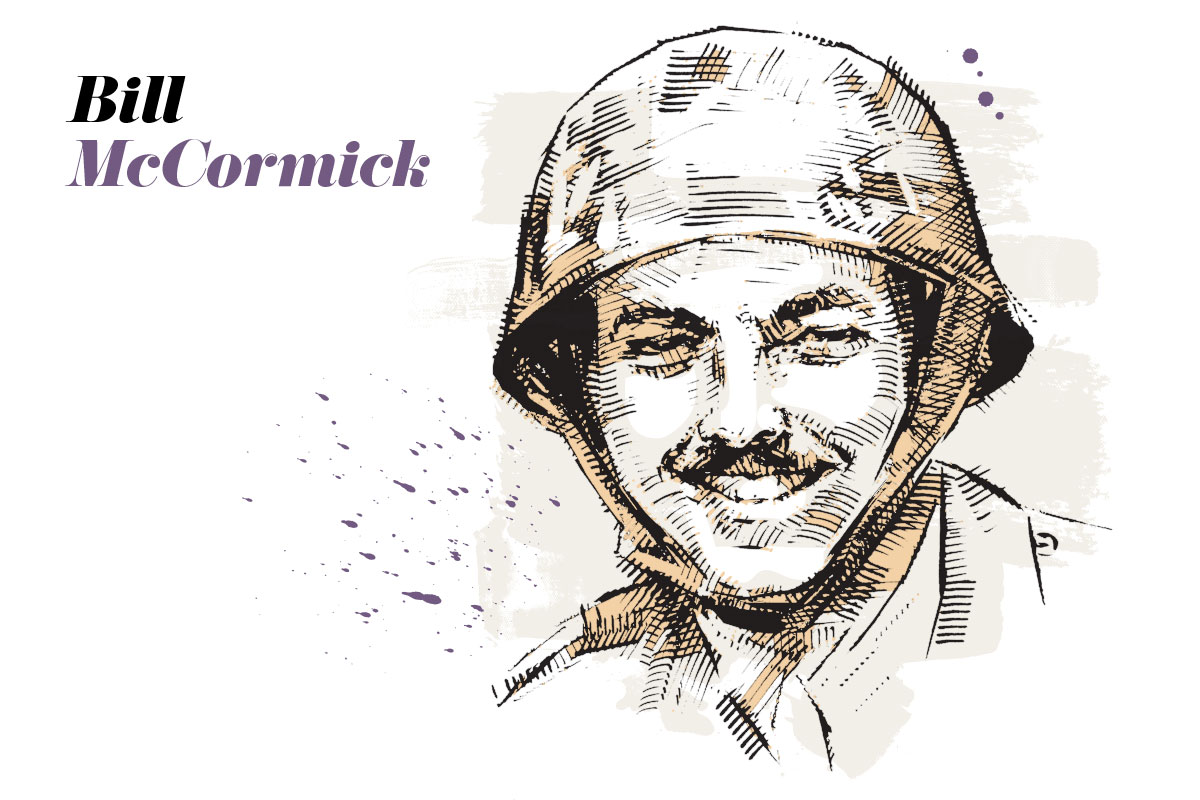
The Canadian Army’s official historian, Colonel Charles P. Stacey, believed that British and Canadian units were far too cautious in their advance inland on D-Day. He insisted that a more “sustained effort in the later phases would have produced…the seizure of ground which we later had to purchase by many weeks of bloody fighting.”
The only evidence Stacey offered was the story of Lieutenant W.F. (Bill) McCormick. He was commander of the 1st Hussars’ No. 2 Troop ‘C’ Squadron, a four-tank unit whose Shermans “just kept on going,” coming close to the divisional objective before turning back to locate the infantry.
This isolated incident did not really support Stacey’s critique of Canadian operations because the next morning the brigade’s infantry battalions reached their objective without any serious fighting and dug in to meet the expected enemy counterattacks.
McCormick’s memory of D-Day was clear. His tank troop, part of a reserve squadron, landed after Juno Beach was secure, advancing with the Royal Winnipeg Rifles on the right flank. At the commune of Creully, the infantry called for tank support and McCormick engaged a German machine-gun post. He then fired a round through a church steeple where an enemy observer was rumoured to be posted.
With Creully secure, French civilians approached and a young boy, René Lemars, climbed up on the tank to offer a bottle of wine. (In 2011, McCormick travelled to Creully for a reunion with Lemars, then 76 years old.)
As the rest of ‘C’ Squadron paired up with the Canadian Scottish Regiment for the next phase, McCormick’s troop “kept on going.” Apart from a German scout car, which was quickly disabled, they met no resistance. Four tanks could not possibly hold an extended front and McCormick decided to withdraw.
He met with the vanguard of the Canadian Scottish Regiment at Le Fresne-Camilly and reported that the way to the Caen-Bayeux highway was clear. Lt.-Col. F.N. Cabeldu “wanted to push on to the battalion’s final objective, but permission was not granted.” A counterattack by 21st Panzer Division had blocked the British advance to Caen and split the bridgehead. The army commander, Lieutenant-General Miles Dempsey, ordered his troops to pause and consolidate. The advance would resume at dawn on D+1 and McCormick would again lead the way to the brigade objective.
McCormick’s war ended less than a week after D-Day, in the wheat fields near Le Mesnil-Patry. His troop and the rest of ‘C’ Squadron were drawn into an action later described as another “charge of the light brigade,” a hurried attempt to assist the advance of the 50th British Division.
The Hussars knew just how dangerous it was to advance across open fields, for on June 9, McCormick’s friend and fellow troop leader Lieut. Gordon Henry and his men had engaged and destroyed seven of the enemy’s formidable Panther tanks as they crossed similar open ground. On June 11, the Hussars lost 37 tanks in a few hours while the company of the Queen’s Own Rifles of Canada, who rode into battle with them, suffered a 90 per cent casualty rate.
McCormick and the rest of ‘C’ Squadron arrived late, and as they prepared to advance they could see the wreckage of burning Sherman tanks scattered across the fields. McCormick recalled his anger and fear as his troop advanced, hoping to support the infantry. Within minutes, his tank—dubbed “Cataraqui”—was struck, killing two crew members and shattering McCormick’s leg. The survivors pulled their lieutenant out of the tank and helped him to safety, but his leg could not be saved and was amputated below the knee.
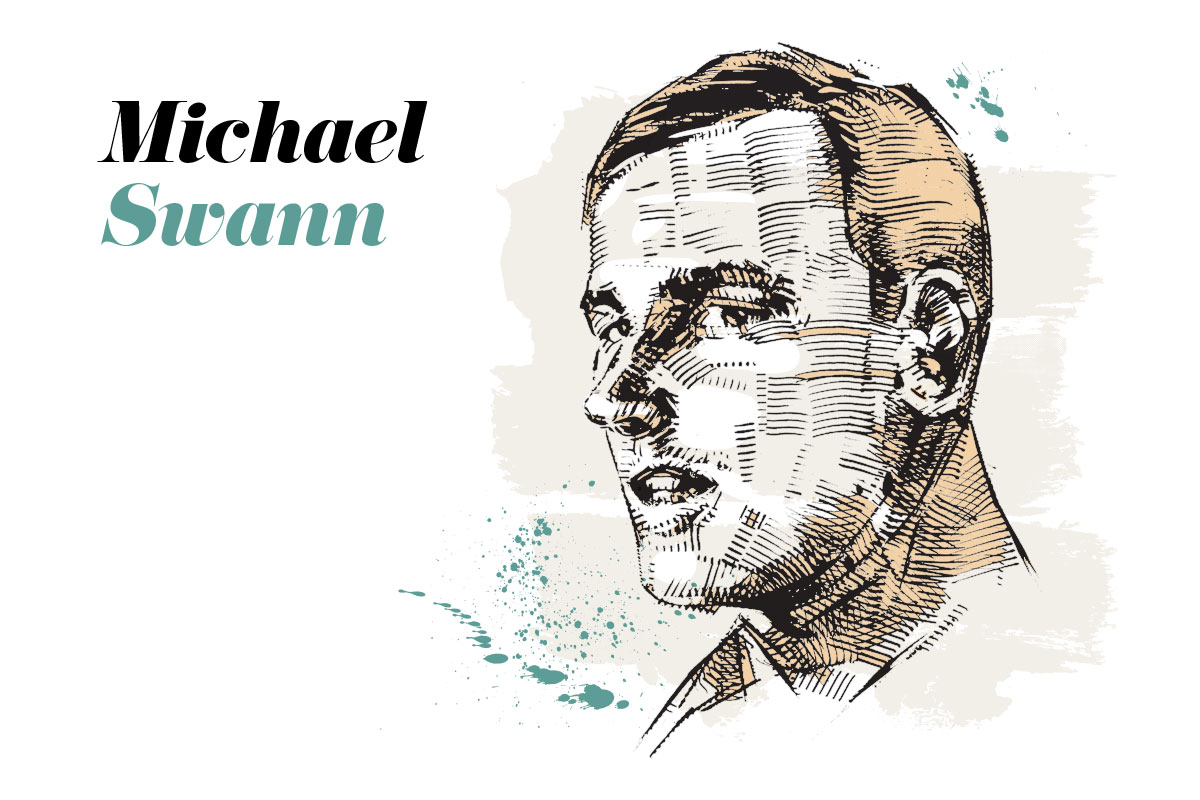
In the 1990s, I tracked down and interviewed several men who wore uniforms and held military commissions but never fired a weapon or endured basic training. They were members of Britain’s Army Operational Research Group (AORG), established to apply scientific methods to the development of weapon systems.
When the war started, Canadian physiologist Omond M. Solandt was at Cambridge University. He turned to researching the effect of tank design on crews, became a colonel, and joined the AORG. Solandt shared his wartime memories with me and helped locate colleagues who served in Normandy as “Montgomery’s Scientists.”
The most helpful of these was British-born Michael Swann, who left Cambridge in 1940 with a degree in zoology and enlisted as a private in a county regiment. Desperate for bright young scientists of any background, the army sent him to study radar until someone discovered he spoke Icelandic, the result of student field trips to the North Atlantic nation. After a year there studying conditions of arctic warfare, he returned to England and joined the AORG to examine weapons and tactics at the School of Infantry, Barnard Castle, Yorkshire.
The veteran instructors at the school did not know what to make of the 23-year-old captain in the Royal Electrical and Mechanical Engineers who was authorized to report on their methods and make recommendations. Swann was a self-starter with unlimited confidence in the scientific method and his own abilities, so he set his own agenda providing the school with valuable evidence-based data on weapons and tactics.

Swann joined Montgomery’s No. 2 Operational Research Section, alongside John F. Fairlie, an RMC graduate and engineer from Toronto. Fairlie produced reports on fire support during the Normandy landings; Swann tackled problems confronting the infantry. Canadian field officers, Swann said, were far more receptive to the research than their British counterparts and the operational research section worked mainly with First Canadian Army.
Swann believed his most important contribution was work that led to the formation of Canadian and British “radar batteries” to locate enemy mortars. Seventy per cent of Allied casualties in Normandy were caused by enemy mortar and Nebelwerfer rocket fire. Swann was determined to do something about it.
Listening posts with microphones linked to four-pen amplitude recorders identified some German mortar locations, but Swann believed a mobile radar set would be able to detect the arc of a projectile and give an exact location. Swann persuaded 21st Army Group to create counter-mortar teams, which greatly increased the odds of locating and destroying enemy mortars. By September 1944, 1st Canadian Radar Battery was ready for action.
Swann had a very distinguished postwar career as a scientist and educator and is remembered for his work as principal of the University of Edinburgh and service as chair of the BBC, but his greatest contribution was saving Allied lives in Normandy and Northwest Europe.
Advertisement












